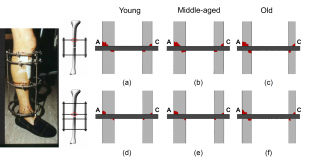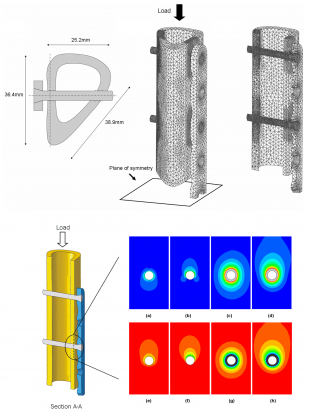Osteoporosis is a disease in which bone becomes more porous and susceptible to fractures. With increasing ageing population, treatment of osteoporotic fractures is becoming increasingly important.
Our group has conducted extensive studies to optimise fracture fixation in osteoporotic bone. For bones with varying levels of osteoporosis our studies have considered a number of devices and configurations. These include external fixators (Ilizarov and unilateral) [1-2] and internal fixators (locking plates, dynamic compression plates, Gamma nails and dynamic hip screws) [3-7]. We have developed novel algorithms to incorporate anisotropy and yielding of bone.
Our studies have, for the first time, simulated loosening of these systems in the bone. Preliminary clinical guidance to help clinicians choose an optimum device and configuration has been developed [REF]. We are currently developing a smart phone application to help clinicians select and configure one of the devices used for fracture fixation. This research has led to the award of British Orthopaedic Society’s Travelling Fellowship to the now graduated PhD student.
References:




